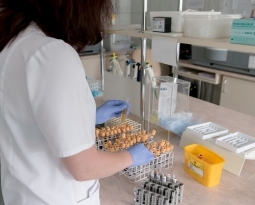Neiman Marcus iLab using innovation to advance luxury
On Sunday, February 11, 2018, Karen Katz retired as CEO for Dallas-based luxury retailer Neiman Marcus. She is succeeded by Geoffroy van Raemdonck from Ralph Lauren. Given the current economic and social climate, the CEO position is not an easy one to fill as consumer trends are ever-changing in the digital age. With the expansion of e-commerce, failing customer foot traffic into physical stores, and nearly $5 billion in debt, the 110-year-old retailer’s longevity is not guaranteed. But perhaps its ongoing investment into the Neiman Marcus iLab could offer some relief for the company’s problems.
In this digital age, one of the primary questions the company has asked is, “How do we take the experiences [the customer] is having online and make that really seamless [in store] from a personalisation perspective?” The Neiman Marcus iLab may offer some solutions. Initiated in 2012, the iLab is under the direction of Scott Emmons whose background in Information Technology gives him unique insight into utilizing technology to enhance the customer experience. He maintained that innovative technology is “not a silver bullet that will save the world” but it is nevertheless a critical piece in a complicated retail puzzle. One of the iLab’s iconic innovations was the Memory Mirror which allows customers to see how a piece of clothing looks at all angles. Emmons explained, “You don’t have to ask your husband or girlfriend or a sales associate how it looks in the back. You can see for yourself.” As of 2017, 38 Memory Mirrors can be found in 20 of Neiman Marcus’ stores. The project was so successful that it has been converted in other applications, such as at the beauty counters where customers can see digitally how a cosmetic product will look on them. Another innovation was Neiman Marcus’ free phone charging lockers, rolled out in 2014. The kiosk makes customers use their phone numbers as an unlock code and doubles up as a customer acquisition tool.
Innovation isn’t cheap, however, and ideas must first go through a rigorous review by executives. Afterwards, they are prototyped in the lab to test proof of concept before they can be implemented in stores. Emmons said, “In the end, when you do technology right, you do have to pay for it. There is a cost associated with getting into the store, so I have to think about technology that is scalable and the business is going to want an ROI on the technology.”
“Not everything works,” Emmons said. “Most of the time, it won’t…[Y]ou have to think about these experiments not as failures, but as learnings that can be applied to future projects.”
The Neiman Marcus iLab demonstrates technical risk. Sound familiar? If you’re also engaging in technical risk and conducting experiments, did you know you could be eligible for the R&D Tax Credit and can receive up to 14% on your expenses? To find out more, please contact a Swanson Reed R&D Specialist today or check out our free online eligibility test.
Swanson Reed regularly hosts free webinars and provides free IRS CE credits as well as CPE credits for CPA’s. For more information please visit us at www.swansonreed.com/webinars or contact your usual Swanson Reed representative

















